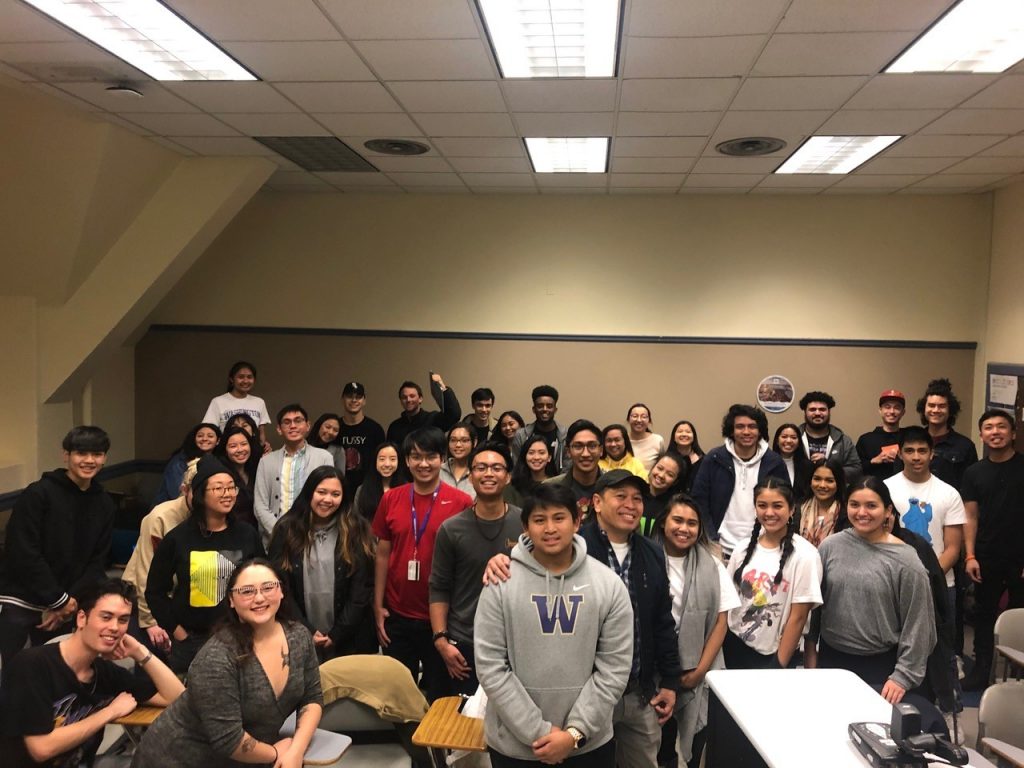Preface: Critical Filipinx American Histories and their Artifacts
The essays you will read here, including the images you will see, collectively constitute the work that 42 students produced through a college course that I taught in the Autumn Quarter of 2019 at the University of Washington (UW). Entitled, “Critical Filipinx American Histories,” this course was designed to primarily engage students with questions regarding the production, circulation, and transformation of knowledges that touch on the lives of Filipinx Americans. From the long histories of colonization that Filipinxs have experienced all the way to the contemporary diaspora of Filipinx labor around the world, we critically examined the ways in which Filipinx American identities were and continue to be co-constructed, how Filipinx American cultures and social practices are dynamically and endlessly evolving, and why ideas and questions regarding the past, present, and future of Filipinx Americans matter in relation to other groups and to practices of power and resistance.

Towards the last three weeks of our class, we paid close attention to fulfilling an “artifacts project” in which students were challenged to ruminate on significant connections they can make across our class topics, our institutional locations, our personal and community lives, and selected historical objects that were housed at The Burke Museum at UW.
The Philippines-sourced artifacts that we encountered at the Burke Museum presented to us a variety of ways to think and act upon not only the meanings we can infer from regarding and researching on the artifacts; we also considered the artifacts and what they represent as opportunities for us to speculate on our personal and social identities, the communities we belong to within and outside of our university, our recently-learned and freshly-discussed studies of Filipinx American histories and contemporary cultures, and relevant institutional practices related to knowledge production and critique that we were a part of.
Of course, in the fulfillment of these observations, reflections, and speculations, students attempted to produce works that arose from diverse perspectives and lenses, distinct voices and positionalities, and multiple levels of engagement and discourse. We present parts of them here as key elements of an open textbook resource for you. These essays and images cumulatively express our intellectual labors, our personal and social investments in knowledge production, as well as our hopes and questions regarding the relationships among artifacts, people, and the locations where such artifacts are sourced and kept. We are optimistic that our project engages you in provocative ways, in the same manners by which we were inspired and stimulated in putting it together.
This “artifacts project” was made possible by funding from the UW Libraries Open Textbook Grant that I obtained in May of 2018. This grant became the incentive behind a pursuit to integrate students’ works into an open textbook resource for the first time, to teach, read, and learn about “Critical Filipinx American Histories,” a course that I have taught for many years already. This experience thus made it a simultaneous learning process for both me and the students. All of the student projects were eventually completed and uploaded in February of 2020 and will thus be made available for viewing and online discussion from thereon.
Humbly, we want to honor and recognize the indigenous people upon whose land our studies and our work on this project were made possible. The process and completion of this open textbook project also included the supportive work of an amazing team of resource persons from the UW Libraries, the Center for Teaching and Learning, the UW-IT Learning Technologies office, and The Burke Museum. I thank Lauren Ray profusely for guiding me and my students so ably and patiently through the complex processes of open textbook publishing; Maryam Fakouri for helping us navigate through the mazes of licensing and copyrighting; as well as Harry Murphy and John Danneker, also from the U.W. Libraries, for guiding us through. Robyn Foshee from the Center for Teaching and Learning and Beth Lytle from UW-IT Learning Technologies offered us their valuable assistance in accomplishing different parts of this project.
At The Burke Museum specifically, our immense gratitude goes to Dr. Holly Barker (Curator for Oceanic and Asian Culture and Principal Lecturer with the Department of Anthropology), Kathy Dougherty (Collections Manager, Oceanic and Asian Culture), and Rose Mathison (Collections Assistant). Holly and Kathy were the first to open my eyes to the Philippines collection at The Burke and the potentials of pedagogically acting upon practices of access and learning that this collection presented, while Rose provided my students with the freshest voice in museum collection. In addition, I want to make special mention of Lauren Banquer, former Collections Assistant at The Burke, for her helpful work on this project before it became part of an open textbook resource. The chair, faculty, staff, and students at my home department, the Department of American Ethnic Studies, also deserve my appreciation for their support of a project that, to me, was so meaningful in new, innovative, and challenging ways. And lastly, on behalf of all the students who participated so willingly and excitedly in this project, we thank our families and friends for their support, love, and trust. We recognize you all with deep appreciation!
Rick Bonus
University of Washington

